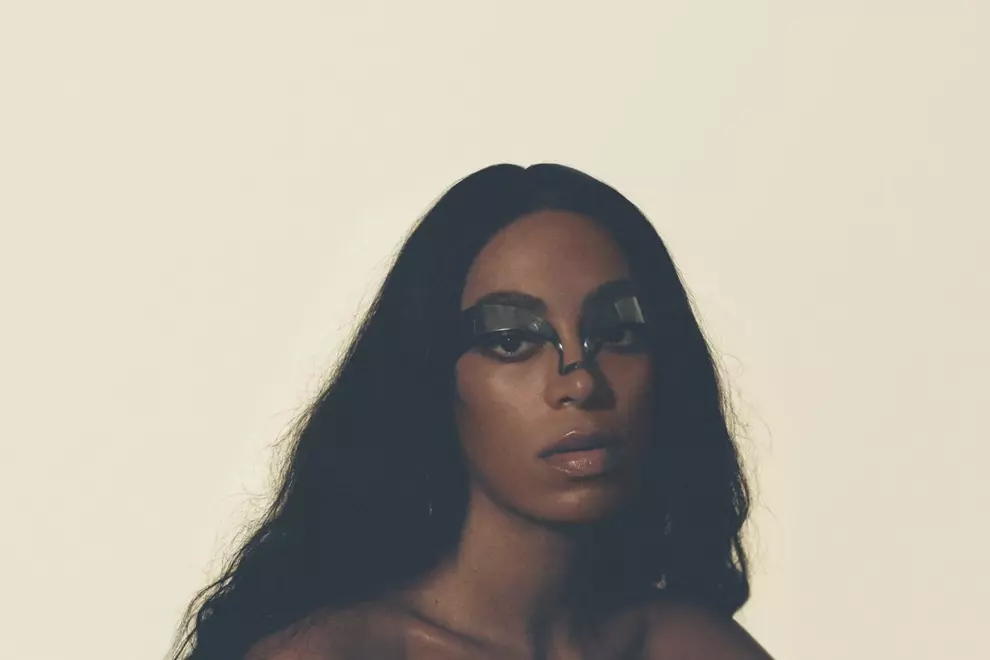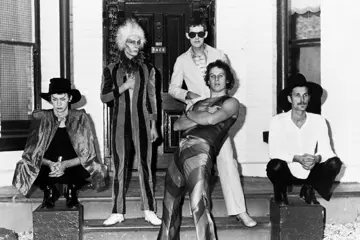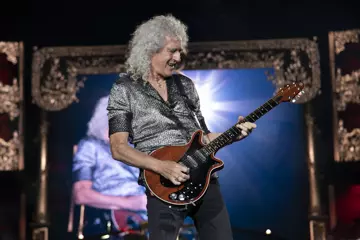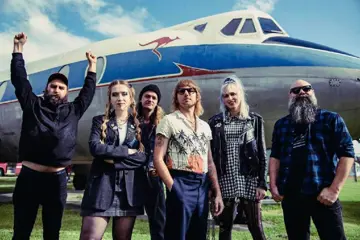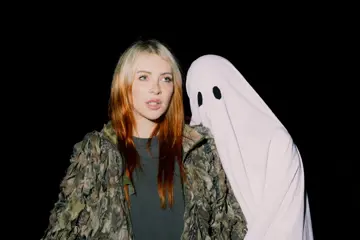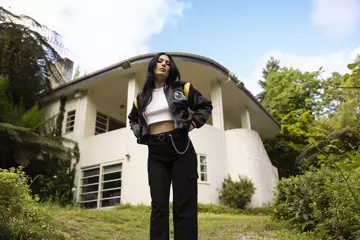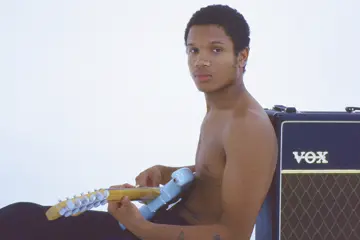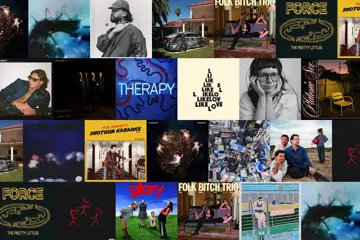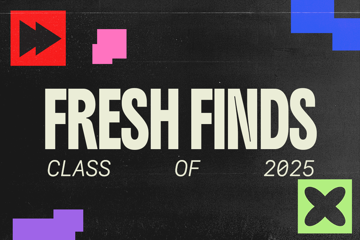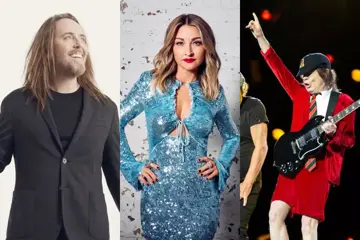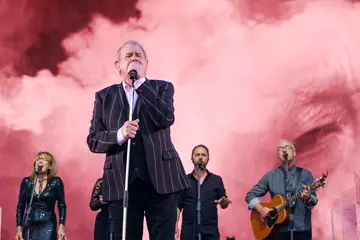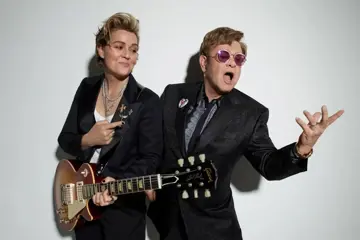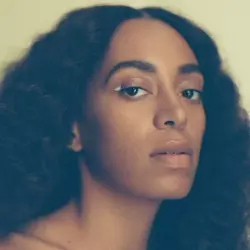 Solange
SolangeSolange Knowles has surprise-released her fourth album, When I Get Home – the follow-up to 2016's acclaimed US chart-topper, A Seat At The Table. The avant 'n' B auteur mentioned new music in a Billboard interview last March, disclosing that she was vibing with The Internet's Steve Lacy.
In October, Solange suggested that an album roll-out was pending to The New York Times Style magazine – and described its direction: "There is a lot of jazz at the core. But with electronic and hip hop drum and bass because I want it to bang and make your trunk rattle." Of course, no LP appeared. But, in January, Solange was confirmed as a Coachella headliner. It seemed inevitable something would arrive before April.
Some industry pundits have speculated that the era of the stealth drop – popularised by Solange's sister Beyonce with her 2013 eponymous visual album – is over, laissez-faire digital marketing actually accentuating music's unfortunate ephemerality. (Even The Carters' EVERYTHING IS LOVE faded quickly.) But Solange should circumvent that trend with the conceptually compelling When I Get Home. It's likely to be one of 2019's most vaunted pop culture 'events'.
In recent years, Solange has emerged as multimedia artist. In 2018, she staged a spectacular concert at the Sydney Opera House in conjunction with Vivid LIVE. Intriguingly, she announced an interior design collab between her countercultural Saint Heron brand and IKEA. And, yes, Solange heralded When I Get Home with striking visuals on her social media channels – notably proposing a mood board, of sorts, on the platform BlackPlanet.
Don't miss a beat with our FREE daily newsletter
The music media have feverishly reported the album's countless contributors – including various Odd Future associates (Tyler, The Creator, Earl Sweatshirt and Lacy), Atlanta rappers Gucci Mane and Playboi Carti, Pharrell Williams and… Animal Collective's Panda Bear. However, Solange never does anything obvious, even with her personnel. As such, this art project is defiantly based on her directives.
When I Get Home is in-sync with A Seat At The Table, only more free-form and fluid. It arcs jazz-fusion (restored to popdom after Kendrick Lamar's To Pimp A Butterfly) and neo-soul, but with the bounce of Southern hip hop. The album is also redolent of classic quiet storm – a genre contemporised by Aaliyah in the '90s but today deemed hip in (white) indiedom. Solange generates a mood, and a vibe, with subliminal melodies, vocal harmonies and textural grooves. Indeed, When I Get Home yields jams, not bops.
A Seat At The Table manifested Solange's experience of black womanhood. Yet When I Get Home is a paean to, and map of, her Houston, Texas hometown – particularly the Third Ward, a historically black neighbourhood. (Beyonce captured the area in her No Angel video, which was ironically partly filmed in the Melbourne suburb of Brunswick.) Nonetheless, as the album press release emphasises, Solange has turned her homage into a thesis on heritage: "The album is an exploration of origin. It asks the question how much of ourselves do we bring with us versus leave behind in our evolution. The artist returned to Third Ward Houston to answer this."
In fact, When I Get Home is comparable to Travis Scott's ASTROWORLD, likewise about Houston, memory and roots. Solange, too, scatters H-Town Easter eggs in her titles, samples and guest spots. Houston rap legend Scarface, of the Geto Boys fame, is audible in two interludes: Exit Scott and Not Screwed! – the latter referencing both Houston's chopped and screwed genre and its progenitor DJ Screw. (In the US, Solange initiated a hotline, recycling an old mobile number spruiked by Southern hustle rapper Mike Jones.) When I Get Home is pithy with 13 songs (and six interludes) clocking in at 40 minutes – but it feels epic.
1. Things I Imagined
For her 2008 sophomore, Sol-Angel & The Hadley St Dreams, Solange duetted with Philadelphia's Bilal on the psych-soul Cosmic Journey. It could be the blueprint for When I Get Home. Things I Imagined sets the album's tone in all of its two minutes. In many respects, When I Get Home aims to open spaces, bringing the avant into the street, and the urban into the concert hall or gallery – albeit on Solange's terms. And Things I Imagined is a noodly jazz banger. On the album, Solange often repeats lyrics for hypnotic effect (here, variations of the line "I saw things I imagined"). She produced Things I Imagined with French musician Chassol and the little-known John Key, who's massively involved in the project.
2. S McGregor (interlude)
3. Down With The Clique
The album's second song is rendered hyper-dramatic with Tyler, The Creator's piano chops. Solange's vocal harmonies float across the abstract jazz-hop beats. She produced Down With The Clique alongside Key and John Carroll Kirby – the Californian keyboardist, composer and producer another major collaborator. Kirby worked on A Seat At The Table. The NY jazz-fusion combo Standing On The Corner, who've previously liaised with Earl Sweatshirt, are responsible for the outro. Curiously, Solange spells the word 'clique' over the US 'click'.
4. Way To The Show
Way To The Show is again a noodly jazz number, with OTT synths and a big boogie factor – The Roots' Questlove will stan. Solange recorded it with Key and Kirby. The onetime Bad Boy star Cassie sings backing vocals. Solange and Cassie are buddies: the Houstonian curated Cassie's Indo for a one-off Saint Heron compilation on her Saint Records in 2013.
5. Can I Hold The Mic (interlude)
6. Stay Flo
Solange can be endearingly sentimental. Stay Flo is presumably named for the starch product. The song is among the album's most low-slung – and, tellingly, the credits reveal the presence of Metro Boomin. The Californian don has already been on board with an earlier buzz avant 2019 excursion: James Blake's Assume Form.
7. Dreams
The gentle Dreams is one of the hookiest songs on When I Get Home. Solange teamed with several figures for it, but the most OMG is Dev Hynes, aka Blood Orange. Solange first properly connected with Hynes for 2012's sanguine True EP – which hatched the viral hit Losing You and established her as 'Indie Knowles'. Dreams also has vocal parts by Devin The Dude, the '90s Houston rapper down with Rap-A-Lot Records. Kirby plays Moog. The reverb-y bits at the end come courtesy of Earl Sweatshirt.
8. Nothing Without Intention (interlude)
9. Almeda
When I Get Home isn't political in the way A Seat At The Table was perceived. But, for Solange, the personal is political – and so is the poetic. In the celebratory Almeda she sings, "Black skin, black braids/Black waves, black days/Black baes, black things/These are black-owned things/Black faith still can't be washed away." The bumpin' track, titled for Almeda in Texas, features Playboi Carti – down with A$AP Mob – and The-Dream. Plus it has studio input from Pharrell Williams. Solange and Williams go back. When she was a teen, Solange worked with The Neptunes on Crush, a sweetly tender classic off her 2002 debut, Solo Star.
10. Time (is)
Houston is nicknamed 'Space City', as it's home to NASA's Johnson Space Center. And Solange sure is into her cosmic soul, with Time (is) an exemplar. It features Sampha on piano and singing. Solange is a legit Sampha fan. She spotlighted the South Londoner on Saint Heron – and he sang on her single Don't Touch My Hair. There are extra vocals from Tyler and Panda Bear – freak folkie. Only Solange could make Time (is) happen.
11. My Skin My Logo
My Skin My Logo catches Solange figuratively 'chopping and screwing' a woke R&B title into a party song – and semi-rapping. She's joined by Gucci Mane, the trap pioneer. Aside from Solange, the production credits list Tyler and Steve Lacy.
12. We Deal With The Freak'n (intermission)
13. Jerrod
Jerrod evokes the psychedelic soul of the '70s. The song thematises reciprocation; of sorrow and sensuality. Solange produces with Key and Kirby.
14. Binz
A carefree Solange acknowledges the paradoxes of capitalism on the electro-hop Binz as she sings about riding around the 'hood in a rented Rolls Royce. She produced the headnoddin' joint with Key and Panda Bear – and it has additional vocals courtesy of The-Dream.
15. Beltway
The quiet, minimalist Beltway is named for Beltway 8, the Texas state highway that encircles Houston. It's a song that relies heavily on repetition – Solange virtually ad-libbing (the first verse is "Don't" over and over and over). Beltway samples the late black feminist poet Pat Parker, another Third Ward native. Solange recorded Beltway with Kirby.
16. Exit Scott (interlude)
17. Sound Of Rain
If there's a song that leaps out as a single contender on When I Get Home, it's Sound Of Rain – about letting loose. Solange won a Grammy in the category of "Best R&B Performance" for Cranes In The Sky. And Sound Of Rain, too, deserves a nomination. Pharrell Williams is a co-producer. Providing backing vocals are Lacy and the cult R&B singer ABRA. Sound… is a trunk-rattler.
18. Not Screwed! (interlude)
19. I'm A Witness
When I Get Home closes with the oblique testimonial of I'm A Witness – helmed by Solange and Key. On BVs? Panda Bear, the album's most implausible guest. Solange sings, "You can work through me/You can say what you need in my mind/I'll be your vessel/I'll do it every time." She sounds like the 2000s Philly neo-soulstress Vivian Green if she had (weirdly) premiered her cult song Emotional Rollercoaster on Houston's Rap-A-Lot.

